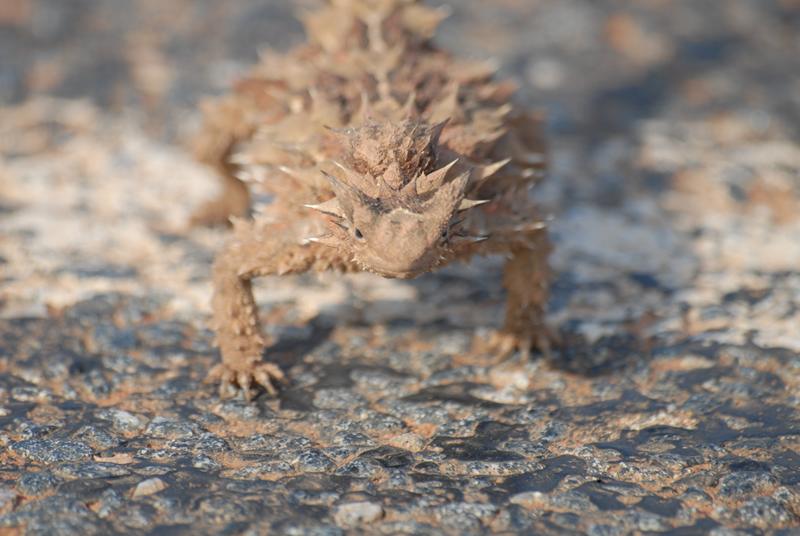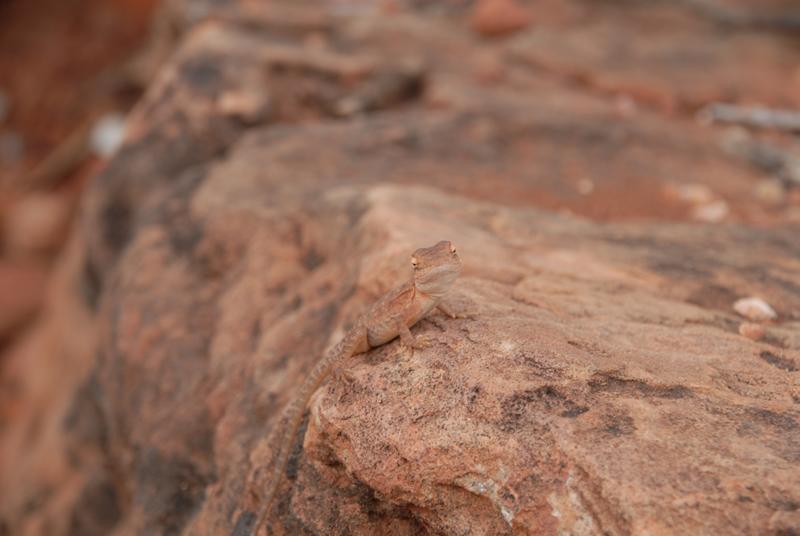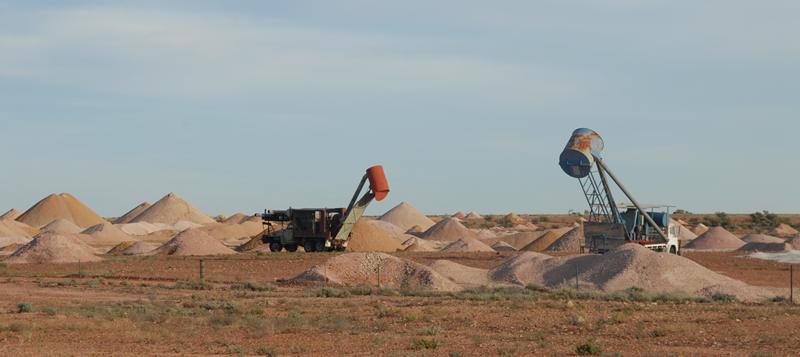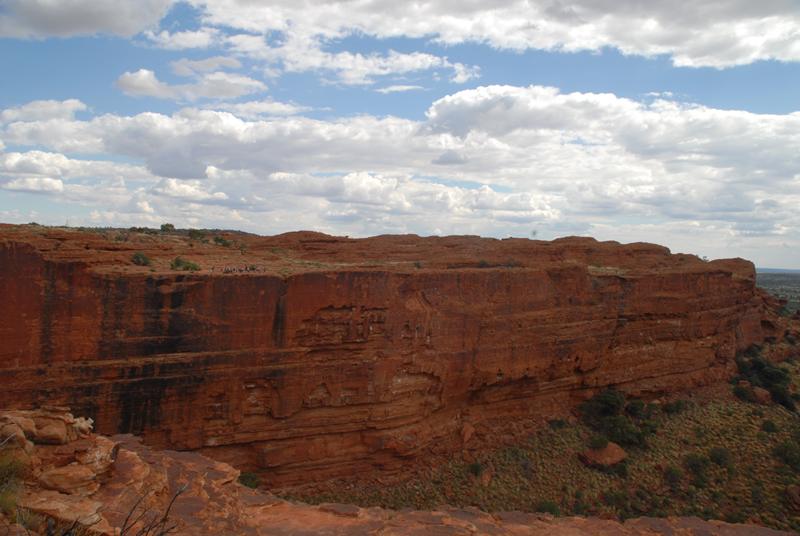The Great Outback Road Trip

Salamander
Mon 14 Feb 2011 10:57
|
One thing is certain, Australia is very, very big
and the distances to cover are vast. The Australians like to discuss the weather
as much as the English, then Queensland has just had, in our first week here,
the biggest cyclone ever - Yasi - with wind speeds up to an incredible 300km/h,
with the eye of the storm, at 70km across, bigger than the whole of the last
cyclone to hit the area. Queensland was just recovering from massive floods with
hundreds of thousands of poisonous snakes and humans all seeking out higher
ground. After Yasi, one local, when asked what it was like, said it was 'a bit
windy'. Malaria and Dengue fever are now also present in the area. On the other
side of the country, massive bush fires, one started by an off-duty policeman
using an angle grinder in his shed, have engulfed nearly 100 homes.
Meanwhile, our image of the great outback is a red
semi-desert, stretching for miles, with kangaroos bounding and emus grazing.
After 11 years of drought, the week before we arrived, courtesy of cyclone Yasi,
saw a years rainfall resulting in floods and some minor road damage. We had two
nights of rain and the outback looked positively lush. Both of us were reminded
of Botswana in the rainy season. Thankfully the maximum predicted temperature
was 35C in the shade, which meant the walks were open.
There are miles between supermarkets, no TV
reception, no radio and no mobile phones (Unlike Morocco, where the phone worked
in the Atlas mountains). Road signs count you down to each fuel station
about 120km apart, there are frequent rest stop areas and you are encouraged by
signs stating Fatigue is Fatal to drive for no more than two hours. With the
roads stretching to infinity the eyes see it disappear into a shimmering haze,
lulling you to sleep. Even with long stretches of straight road, it pays to be
careful when overtaking a road-train truck - at up to 150 feet long it can take
half a kilometer to get past. A flock of emus appear, strolling across the road;
a dingo darts in front of the car, but the road sign which is the most accurate
is the one warning of lizards crossing the road. You can
be driving along, see what looks like a 3 foot vertical stick, then realize it
has limbs and is actually a lizard sunbathing up on its tail.In the
outback the lizards grow up to 6 feet long. Caroline's favourite is the thorny
devil: a magnificent armour plated lizard.
 Smaller reptiles include the beautiful dusky pink
gecko.
 The sands show every colour of orange, red and
pink. Lakes appear red and the sky pink, not from the sun, but from reflections
of the ground. Birds abound, with cockatoos, parrots and even pigeons looking
like they have visited a hat stall with feathered quiffs, crowns and crests. At
the petrol pump an enormous crow caws in Murrays ear, while pecking at a mouse.
Wildlife is everywhere in the bush making driving at night a heartstopping
adventure. Owls swoop off the road, clutching their roadkill treats, kangaroos
bound across and a dingo darts to the other side.
Even the supermarkets provide a treat or surprise.
In the supermarket in the mining community of Coober Pedy, 850km from the
nearest decent size town, with the staff wearing T-shirts proclaiming they serve
the outback mining community, there is a top quality butcher in store, who wraps
your meat in brown paper, like the old days. The supermarket at Ayers Rock had a
novel use for cake tongs- removal of a very large poisonous millipede, while at
Kings Canyon the supermarket had something strange-looking in the freezer. A
closer look revealed a large quantity of kangaroo tails - apparently very good
for making soup.
Coober Pedy is in the central region of Australia
and temperatures regularly reach 40-50C in the shade, so the early opal miners
living there made their homes underground, so we stayed at the main backpackers
in a cave room.
  Driving over the sgtate border into Northern
Territory was strange as the insects, foliage density and everything just
changes, almost immediately. The NT has horrible flies, they
absolutely plague you. Other tourists were sensibly wearing hats with nets
- the cliche hat with dangling corks seemed like a good idea more than a corny
joke. According to a local, due to unusual weather this year the numbers were
far lower than normal - the cull of 6,000 camels a couple of years ago didn't
help. Driving north from Adelaide also saw fuel
prices increase from $1.23 to $1.77 in South Australia and on up to an
incredible $2.06 in one palce in NT. Crossing back into SA, quarantine signs
banned imports of plants, fruit and animals.
The Olgas, in the same park as Ayers
Rock, were fantastic and beautiful, with stunning colours changing as
the sun set. A walk through the gorges produced lizard and several kangaroo
sightings. We saved Ayers Rock (Uluru) for dawn the next day, getting up at
04:30 to see the sunrise illuminate the rock, subtly changing the colours and
giving the rock the appearance of glowing: definitely worthwhile. At least one
person dies climbing the rock each year, and we've been up our share of rocks
lately, so we didn't try it. Murray was tempted
by the emu, camel and kangaroo platter for entree at dinner, but managed not to
succumb.
   Kings Canyon, home to the elusive quoll, provided a
superb walk up the canyon side and around the rim - the pic below has a group of
tourists handily placed to provide scale, but like the Olgas we did most of the
walk without seeing another soul for most of the hike. The cabin we stayed in
provided a new set of warnings- the kitchen had doors 'shut at all times'
and the toilet block had gates to keep dingos out. Signs warned that a fed
dingo is a dead dingo - it would see the camp as a food source and have to be
shot. We loved Kings Canyon and the park swimming pool was great.
 All round, a knackering, but well worthwhile side
trip to the three great rock areas of central Australia. We really enjoyed the
'Red Centre', but drove back south quickly past the area where the Brits tested
a hydrogen bomb in the 50's, which is still radioactive and prohibited
entry.
|